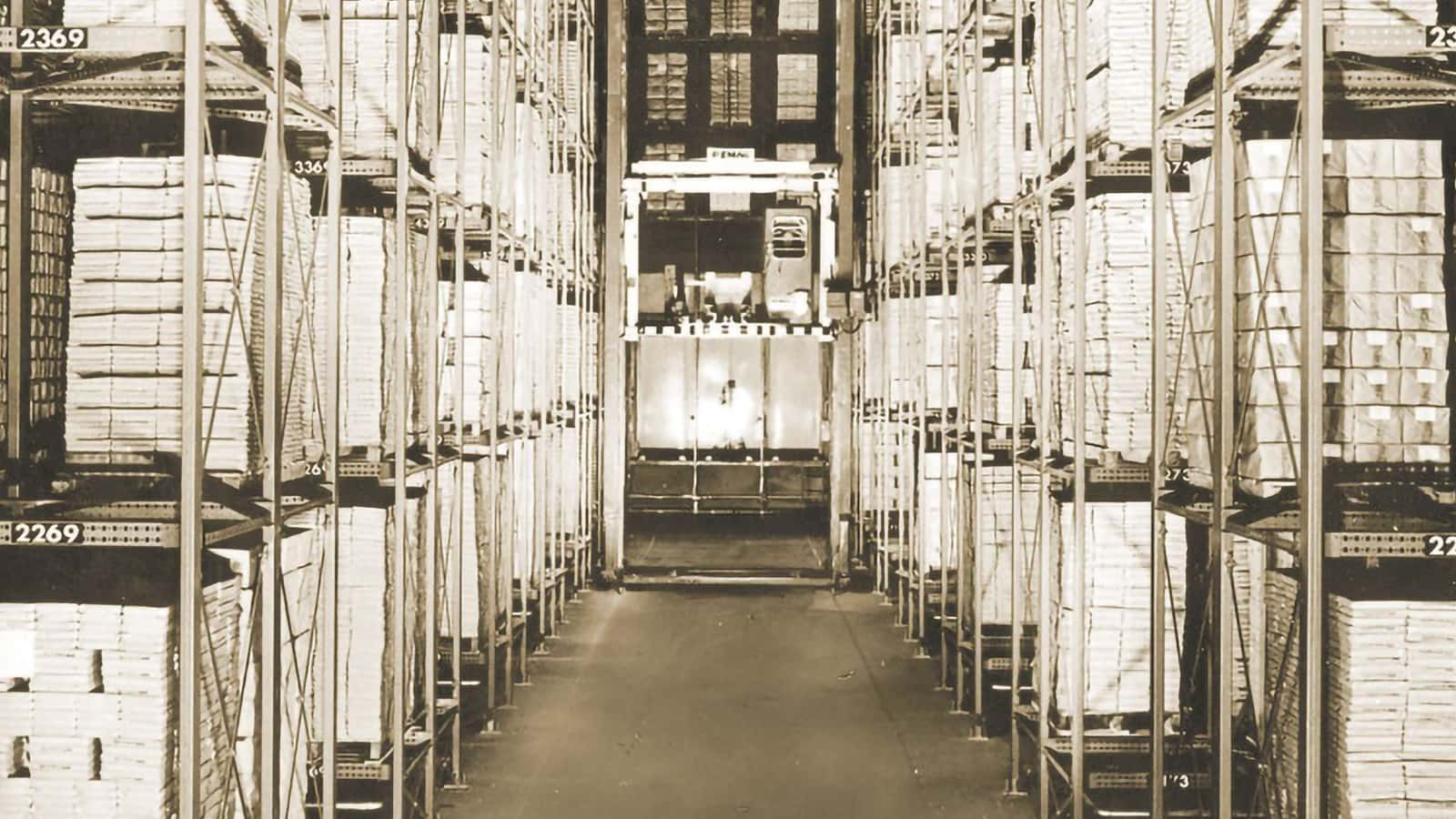ASRS Innovation in Supply Chain

Invented by mid-century Demag engineers. Advanced through ingenuity and acquisition. Speeding and soaring to new heights today… AS/RS has evolved to enable the ever-accelerating pace of commerce in warehouses and distribution centers across the world, 24/7.
The storage and retrieval machine has been a fixture within the global supply chain for nearly 60 years. The technology we now know as an automated storage and retrieval system (AS/RS) was originally developed by Dematic's predecessor Demag, and its foundation of innovation lives on in today’s modern high-bay warehouses and efficiently controlled material flows in industry and logistics.
In the 1950s, much of the supply chain within the four walls of a warehouse or distribution center was manually operated and close to the ground. Fleets of forklifts and reach trucks moved most goods, coupled with conveyor technology. Heavier parts and loads had to be stored at ground level and the height limitations of lift trucks kept rack heights low, resulting in wide-open, spread-out warehouses that ate up acres of land. This broad expanse of space also meant that inventory was stored wherever possible, with no demand-oriented control of material flow and picking.
Demag engineers Friedhelm Podswyna, Horst-Werner Ruttkamp and Werner Kühn had a revolutionary idea: turn the storage rack literally upside down and attach it to the ceiling. By doing so, mobile masts with rotating load-lifting devices could move up and down each rack aisle to access the items stored within the rack. This rack could be taller than any fork truck could lift, which enabled taller, denser storage.
The first storage and retrieval machine went into operation in 1962, installed at a Bertelsmann book-club warehouse in Gütersloh, Germany. Though it was manually controlled from a cabin on the mast, it did offer some semblance of automation… via punch-card control.
The timing of this innovative approach to supply chain operations couldn’t have been better for Germany as it emerged out of the booming 1950s to face the challenges of the 1960s. High-density storage helped businesses tackle increasing consumption, rising energy prices, and ever-diminishing distribution center space in urban and industrial centers. Additionally, the ability to automate provided relief from increasing labor wages in the region. ASRS was here to stay… stuck to warehouse ceilings and rack-top rails well into the 1970s.
But advancements in engineering and computer science made it possible to flip distribution centers on their head once again. Racks were brought back down to the ground, and masts rose from the floor up to retrieve inventory with newfound strength and speed. These changes reduced swaying loads at high heights and multiple aisles could be selected much faster, more frequently and more specifically.
By the 1980s, AS/RS installations had spread throughout the continent, and began to pop up in North America and many other parts of the world. The rate of innovations sped up as quickly as the systems themselves, and rose to new heights. AS/RS facilities were now referred to as high-bay warehouses, due to their rise in potential lift height to a soaring 45 meters (almost 150 feet) high. System technology also continued to advance, including ASRS machines that could switch from aisle to aisle.
In the 1980s and 1990s, computer and IT technology expanded, alongside software-controlled warehouse technologies. Sensors, magnets and lasers were brought in to measure distance and position with precision never seen before. Stepless drive systems required less energy and new load-handling equipment went deeper into racks, enabling different container and pallet systems to serve new markets.
Even though we’re well into the 21st century, AS/RS shows no signs of slowing down. The 2019 AS/RS market is estimated to be worth US$7.6 billion, and is expected to quickly grow, reaching US$11.0 billion by 2024 (source). We certainly expect innovations to continue as well — as industry experts work on technological advancements that:
- Increase energy efficiency, and even energy recovery and reuse
- Avoid energy peaks with software-controlled startup timing
- Reduce the weight of the overall system with new-technology construction materials
- Reduce the potential sway of the mast with pendulum-dampening systems
- Boost the lift lifespan by replacing chains with longer-lasting tension straps — an advancement borrowed from the elevator/lift industry
Innovations like these help AS/RS speed up and soar to new heights, and enable the ever-accelerating pace of commerce in warehouses and distribution centers across the globe, 24/7. But whether flipped upside down or turned right-side up, the basic operating principle remains the same through the years: provide protected, high-density storage; safely retrieve the right inventory at the right time; and release it to the right place.
